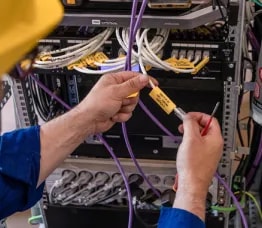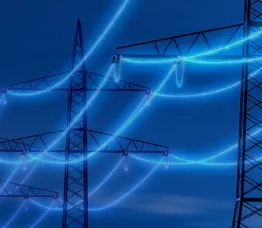Optical networks provide AI-ready grid communications

As we enter mid-2025, it’s interesting to take a fresh look at the landscape for power utilities and the communication networks they use. Coming away from several days at the UTC 2025 Telecom and Technology Conference in Long Beach, California, it struck me that the trends we saw just a year ago are even more in focus.
What’s driving this focus? Rapid acceleration of artificial intelligence (AI) tool development (and its related data center energy demand) and ever-changing security threats.
In an August 2024 blog post, I wrote about how we see an increasing need for robust grid communication, easy scalability, network health monitoring, network resilience and, perhaps most importantly, security. These factors are still relevant today, just as they have been for several years.
There is nothing new about power grid systems utilizing fiber optic networks to provide grid control and monitoring or to deliver broadband communication services. Technologies such as network slicing, OTN switching and timing synchronization distribution have been adopted to differing degrees by utilities across the world. Network automation tools have been emerging for some time and are now sophisticated. Simple data encryption has been adopted casually among some users.
But let’s look at AI and security.
Industries and consumers are quickly embracing the use of AI tools and models. This is causing a re-working of the way data workloads are handled and stored. To put it bluntly, there is a crushing amount of data to be processed, transmitted and stored at an increasing number of data centers—all of which require massive amounts of power. That power needs to come from somewhere and while some large-scale data center operators like Google may run their own nuclear power sources, it’s reasonable to expect an AI-driven increase in power grid demand over the next several years.
This demand will be met through various means, be it traditional power generation or new wind, solar or hydro capacity. All of these sources will need communication connectivity that can be deployed flexibly and easily. As the complexity of the grid increases, communication need not become more complex. Rather, the use of familiar, scalable tools in the optical network will ease this burden. There is also good news when it comes to security. The power grid is an obvious target for those who wish to wreak havoc or disrupt society. If we are adding complexity to the power grid to meet increasing demand, we are also giving the bad guys more targets.
Attacks could take on many forms, from brute-force destruction to more subtle zero-day vulnerabilities. Government regulators are now concerned about the possibility of quantum computer attacks on conventional data encryption, which could impact everything from grid monitoring to customer billing systems. These are not wild fear mongering assertions. In 2015, Ukraine experienced a cyberattack that was blamed on Russian military forces. Earlier in 2025, an outage on the Iberian Peninsula was initially speculated to be a cyber-attack. The cause is still under investigation and thought to be caused by control system fault. Regardless, there is enough uncertainty to keep security experts concerned about the vulnerability of the power grid.
Yes, I did say there’s some good news: Utilities can secure grid communications with a few readily available tools. While equipment vandalism or facility destruction are challenging, we’ve long built networks that restore service automatically through redundant protection mechanisms. Data flooding attacks can be controlled by distributed denial-of-service (DDoS) mitigation techniques embodied in various systems. Quantum-safe networks will protect power grid communications and data against attacks from emerging quantum computers that fall into the wrong hands.
Utilities need communication networks that can meet the need for flexibility and security in rapidly changing and increasingly AI-driven power grids. Nokia has the tools to take this on with ease while opening up new opportunities. In an upcoming blog, I’ll offer some ideas on how existing fiber networks could enable utilities to bring in new revenue from this AI-obsessed world.








